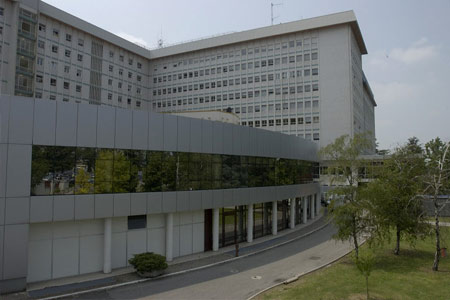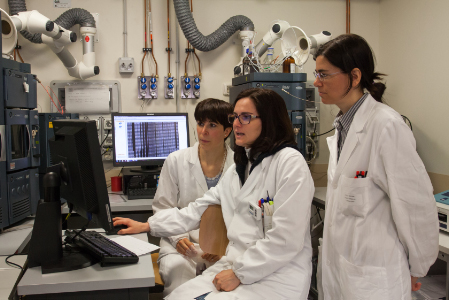We recently discovered a role of PTPRG as a novel myeloid cells marker 1. We now present novel evidence of a critical role of this gene in the pathogenesis of chronic myeloid leukemia (CML), mediated by PTPRG-mediated inhibition of BCR/ABL tyrosine kinase. PTPRG expression has an oncosuppressive effect on CML blast cells growth in vitro and in vivo, in a xenografted model of CML. While the diagnosis of CML (1-2 new cases/100.000 in western countries) is relatively easy to perform, the follow up of the disease require sensitive assays that are based on the search of blasts in the circulation and bone marrow harboring the BCR/ABL chimeric gene. We have found that PTPRG is down modulated both at the mRNA and protein level in peripheral blood and bone marrow cells in chronic myeloid leukemia (CML) (p<0.0001 for bone marrow, p=0.0137 for peripheral blood mRNA expression), suggesting a role as a biomarker for this disease. These data have been submitted for publication (MS: BLOOD/2008/133090).
It is worth noting that the patients that are negative for PTPRG expression at diagnosis re-express it when the therapeutic treatement is successful. We propose to explore the possibility that the evaluation of PTPRG could complement the analysis of BCR/ABL transcript, necessary for the diagnosis. The advantage of PTPRG evaluation rely on the determination of protein expression by flow cytometry on peripheral blood leukocytes, a robust and economic assay to perform on a large scale. In fact, we developed2 and plan to generate (this proposal) a second generation antibody-based assay on peripheral blood samples where healthy patients, scoring negative for BCR/ABL transcript would score positive for PTPRG protein expression. The opposite is true in the presence of CML.
Overall we aim at the elucidation of the molecular mechanisms underlying the oncosuppressive effect in CML blasts and to the development of new molecular assays (both at the mRNA and protein level) for the evaluation of PTPRG expression in clinical samples. Strategies aimed to the activation of PTPRG expression/enzymatic activity in CML blast are also planned in order to evaluate the therapeutic potential of the reactivation of this phosphatase.
1D. Lissandrini, W. Vermi, M. Vezzalini et al., Blood 108 (13), 4223 (2006).
2A. Mafficini, M. Vezzalini, L. Zamai et al., Biomarker Insights 2, 217–24 (2007).







